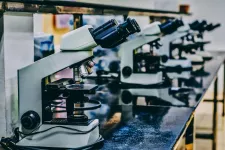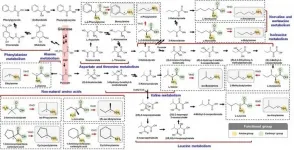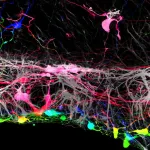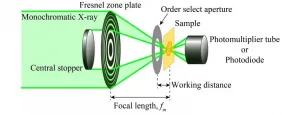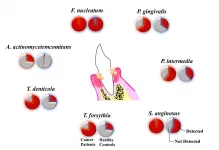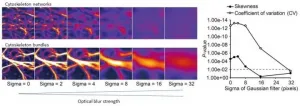(Press-News.org) A new type of stem cell - that is, a cell with regenerative abilities - could be closer on the horizon, a new study led by UNSW Sydney shows.
The stem cells (called induced multipotent stem cells, or iMS) can be made from easily accessible human cells - in this case, fat - and reprogrammed to act as stem cells.
The results of the animal study, which created human stem cells and tested their effectiveness in mice, was published online in Science Advances today - and while the results are encouraging, more research and tests are needed before any potential translation to human therapies.
"The stem cells we've developed can adapt to their surroundings and repair a range of damaged tissues," says haematologist John Pimanda, a professor at UNSW Medicine & Health and co-senior author of the study.
"To my knowledge, no one has made an adaptive human multipotent stem cell before. This is uncharted territory."
The scientists created the iMS cells in a lab by exposing human fat cells to a compound mixture that caused the cells to lose their original identity. This process also erased 'silencing marks' - marks responsible for restricting cell identity.
The researchers injected the human iMS cells into mice where they stayed dormant - at first. But, when the mice had an injury, the stem cells adapted to their surroundings and transformed into the tissue that needed repairing, be it muscle, bone, cartilage, or blood vessels.
"The stem cells acted like chameleons," says lead author Dr Avani Yeola, a post-doctoral stem cell researcher in Prof. Pimanda's laboratory. Dr Yeola conducted this work as part of her doctoral thesis at UNSW Medicine & Health.
"They followed local cues to blend into the tissue that required healing."
There are existing technologies to transform cells into stem cells, but they have key limitations: tissue-specific stem cells are inherently limited in the range of tissues they can create, and induced pluripotent stem (iPS) cells cannot be directly injected because they carry a risk of developing tumours. iPS cells also need extra treatment to generate specific cell types or tissues before use. More studies are needed to test how both iPS cells and tissues created by tissue-specific stem cells function in humans.
iMS cells, which are made from adult tissue, showed no sign of any unwanted tissue growth. They also adapted to a range of different tissue types in mice.
"These stem cells are unlike any others currently under evaluation in clinical trials," says Dr Yeola.
"They are made from a patient's own cells, which reduces the risk of rejection."
The study builds on the team's 2016 study using mouse cells and is the next step before human-only trials. But there is still a long wait - and much more research to be done - to assess whether the cells are safe and successful in humans.
If the iMS cells are shown to be safe for human use, they could one day help mend anything from traumatic injuries to heart damage.
"This is one step further in the field of stem cell therapy," says Dr Yeola.
A simple but powerful technology
Each human cell - be it a heart cell or brain cell - shares the same DNA content. The cells look and behave differently because they use different parts of DNA.
The parts of DNA that the cells don't use are usually shut down by natural modifications.
"The idea behind our approach was to reverse these modifications," says Prof. Pimanda.
"We wanted the cells to have the option of using that part of the DNA if there was a signal from outside the cell."
The researchers reprogrammed fat cells using two compounds: azacitidine, a drug used in blood cancer therapy; and a naturally occurring growth factor that stimulates cell growth and tissue repair.
The cells released their fat and lost their identity as a fat cell around three and a half weeks after treatment.
"This is a very simple technology," says Dr Vashe Chandrakanthan, a senior research fellow at UNSW Medicine & Health and co-senior author of the study. Dr Chandrakanthan, who led the 2016 mouse study with Prof. Pimanda, came up with the idea of creating iMS cells.
He says there are two main possibilities for potential clinical application.
"One idea is to take the patient's fat cells, put it into a machine where it incubates with this compound. When ready, these reprogrammed cells could be put into a vial, and then injected into the patient," says Dr Chandrakanthan.
"Another option is to combine the two compounds into a simple mini-pump that could be installed in the body, like a pacemaker."
This mini-pump could theoretically be put near the body part needing assistance (for example, the heart), where it could dispense regulated doses to create new stem cells.
Looking ahead
While the results are encouraging, the researchers are mindful that potential translation to human therapies is still a long way away.
"Safety is our first and primary concern," says Prof. Pimanda.
"Preclinical studies and clinical trials still need to be done, and we need to be sure we can generate these cells in a safe condition.
"Industry partners could bring expertise in production of clinical-grade iMS cells and design and conduct of clinical trials," he says. "This will help take this research to the next stage."
Dr Chandrakanthan says that if future studies are successful, a real-world delivery of this therapy could take anywhere up to 15 years.
"Successful medical research that achieves its final goal - that is, translating to routine clinical applicants and treatment - can often take many decades," says Dr Chandrakanthan. "There can be barriers, setbacks and failed experiments. It's the nature of research.
"While these findings are very exciting, I will keep a lid on my excitement until we get this through to patients."
INFORMATION:
Males are more likely to test positive for COVID-19, more likely to have complications and more likely to die from the virus than females, independent of age, according to a new study published this week in the open-access journal PLOS ONE by Farhaan Vahidy of Houston Methodist Research Institute, US, and colleagues.
As the COVID-19 pandemic unfolds and evolves across the globe, researchers have identified population sub-groups with higher levels of disease vulnerability, such as those with advanced age or certain pre-existing conditions. Small studies from China and Europe have indicated that males tend to experience higher disease ...
KAIST metabolic engineers presented the bio-based production of multiple short-chain primary amines that have a wide range of applications in chemical industries for the first time. The research team led by Distinguished Professor Sang Yup Lee from the Department of Chemical and Biomolecular Engineering designed the novel biosynthetic pathways for short-chain primary amines by combining retrobiosynthesis and a precursor selection step.
The research team verified the newly designed pathways by confirming the in vivo production of 10 short-chain primary amines by supplying the precursors. Furthermore, the platform Escherichia ...
Women who are young, "conventionally attractive" and appear and act feminine are more likely to be believed when making accusations of sexual harassment, a new University of Washington-led study finds.
That leaves women who don't fit the prototype potentially facing greater hurdles when trying to convince a workplace or court that they have been harassed.
The study, involving more than 4,000 participants, reveals perceptions that primarily "prototypical" women are likely to be harassed. The research also showed that women outside of those socially determined norms ...
WASHINGTON -- Women who do not fit female stereotypes are less likely to be seen as victims of sexual harassment, and if they claim they were harassed, they are less likely to be believed, according to research published by the American Psychological Association.
"Sexual harassment is pervasive and causes significant harm, yet far too many women cannot access fairness, justice and legal protection, leaving them susceptible to further victimization and harm within the legal system," said Cheryl Kaiser, PhD, of the University of Washington and a co-author of the study published in the Journal of Personality and Social Psychology. "Our research found that a claim was deemed less ...
In experiments in mouse tissues and human cells, Johns Hopkins Medicine researchers say they have found that removing a membrane that lines the back of the eye may improve the success rate for regrowing nerve cells damaged by blinding diseases. The findings are specifically aimed at discovering new ways to reverse vision loss caused by glaucoma and other diseases that affect the optic nerve, the information highway from the eye to the brain.
"The idea of restoring vision to someone who has lost it from optic nerve disease has been considered science fiction for decades. ...
DALLAS - Jan. 13, 2021 - A new treatment that combines two existing medications may provide long-sought relief for many battling debilitating methamphetamine use disorder, according to a study to be published tomorrow in The New England Journal of Medicine.
The article, based on a multisite study funded by the National Institutes of Health (NIH), describes how combining an injectable drug currently used to treat alcohol and opioid addictions (naltrexone), and a commonly prescribed antidepressant (bupropion) produced positive results in 13.6 percent of the 403 patients treated, significantly higher than the 2.5 percent response in placebo ...
Lithium-ion batteries (LIB) are widely used for daily products in our life, such as hybrid cars, cell phone, etc. but their charge/discharge process is not fully understood yet. To understand the process, behaviors of lithium ion, distribution and chemical composition and state, should be revealed. A research group in Institute for Molecular Science noticed on a scanning transmission X-ray microscope (STXM, shown in Fig. 1) as a powerful technique to perform X-ray absorption spectroscopy (XAS) with high spatial resolution. By using absorption edge of a specific ...
Researchers led by Tokyo Medical and Dental University (TMDU) find that certain oral pathogens are more prevalent in esophageal cancer patients, and could be used as a novel diagnostic tool
Tokyo, Japan - It is increasingly clear that the trillions of bacteria that make themselves at home in and on the human body are more than just casual observers along for the ride. Gut bacteria in particular have been shown to have an enormous influence on human health, with studies suggesting they play a role in illnesses ranging from autoimmune disorders to anxiety and depression.
The oral cavity is another rich source of microbial diversity, ...
A research group from Kumamoto University, Japan has developed a highly sensitive technique to quantitatively evaluate the extent of cytoskeleton bundling from microscopic images. Until now, analysis of cytoskeleton organization was generally made by manually checking microscopic images. The new method uses microscopic image analysis techniques to automatically measure cytoskeleton organization. The researchers expect it to dramatically improve our understanding of various cellular phenomena related to cytoskeleton bundling.
The cytoskeleton is a ...
Data from the DESI (Dark Energy Spectroscopic Instrument) Legacy Imaging Surveys have revealed over 1200 new gravitational lenses, approximately doubling the number of known lenses. Discovered using machine learning trained on real data, these warped and stretched images of distant galaxies provide astronomers with a flood of new targets with which to measure fundamental properties of the Universe such as the Hubble constant, which describes the expanding Universe.
Astronomers hunting for gravitational lenses utilized machine learning to inspect the vast dataset known as the DESI Legacy Imaging Surveys, uncovering 1210 new lenses. The data were collected at Cerro Tololo Inter-American Observatory (CTIO) and Kitt Peak National Observatory (KPNO), ...
